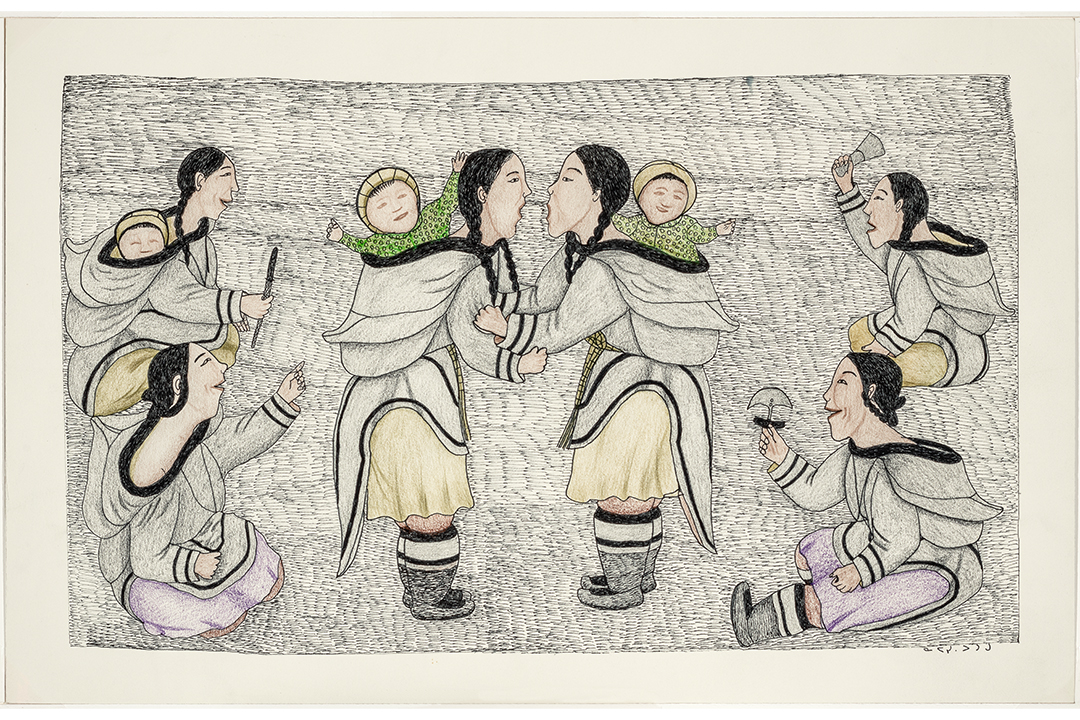Canada is home to vastly diverse Indigenous communities, some living farther north than much of Canada’s population. However, this distance shouldn’t prevent people living further south from engaging with stories and histories from northern communities.
TUSARNITUT! Music Born of the Cold is a story of Inuit culture and tradition, as told by Inuit communities located in arctic regions of Canada through art and music. The exhibit, now at the Royal Ontario Museum (ROM), amplifies the sounds of traditions such as throat singing and drum dancing, and showcases the breadth of Inuit musical expression across multiple generations.
The context: Bringing throat singing into the spotlight
Throughout the exhibit, the tradition of Inuit throat singing is brought to life by audiovisual performances and soapstone carvings of vocal cords. Throat singing is a friendly competition between two Inuit women who mimic sounds of the natural environment through complex movements of their mouth and diaphragm. In the early 1900s, Christian missionaries tried to eradicate this longstanding Inuit tradition.
Recently, some Inuit have brought discussions of this history to a wide audience. In an interview with Breakfast Television, throat singer Pauline — who only discovered the craft in her teenage years — commented on the suppression of the genre. “It was quite rare for us to learn [throat singing] at home because our parents went to residential school,” she said. “So it was really important for me when I had a chance, because this was actually forced to be stopped in Inuit culture.”
Pauline is not the only star currently bringing throat singing back into the spotlight; TikTok sensation Shina Novalinga took to social media for her throat singing during the pandemic. When throat singing was forbidden in Puvirnituq, Novalinga’s mother was one of the few women who was able to preserve the art. She later passed the tradition down to her daughter, and it continues to bring them closer together today.
A history of Inuit musical expression
In addition to the intimate practice of throat singing, TUSARNITUT! Music Born of the Cold sheds light on the central role of drum dancing in facilitating relationships within Inuit communities and with ancestors.
According to angakkuuniq — an Inuit belief system — all living entities can reincarnate into other forms, and the human and non-human worlds are inextricably linked. The exhibition showcases carvings of walruses and bears playing the drum, performing drum dances in the same role as angakkuit — a community’s spiritual leaders. Drum dances and drum songs are communal events, and several of the artworks throughout the exhibition show a man carrying an angakkuq using a drum, or the dance itself occurring within an iglu.
In a conversation with The Varsity, Justin Jennings, the ROM’s Senior Curator of Archaeology of the Americas and co-curator of TUSARNITUT!, highlighted his hopes for the exhibit’s impact. “I think the most important message to me is to showcase the vibrancy, the excitement, [and] the joy that you see in Inuit music and dance,” he said. “[To] look at where Inuit music has been, but also where it’s going.” As a lifelong learner and art lover, I was deeply moved by the exhibit, which seemed to me to embody the idea of “sounds that please the ear” — which is how the exhibit translated its title, ‘tusarnitut.’ With over 100 installations, TUSARNITUT! Music Born of the Cold celebrates the collective joy of Inuit musical expression across multiple generations, styles, and mediums.



No comments to display.